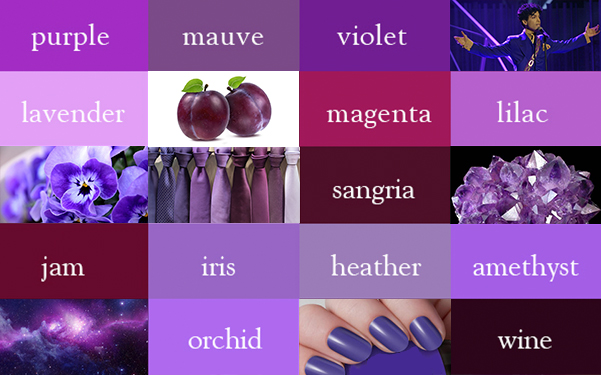
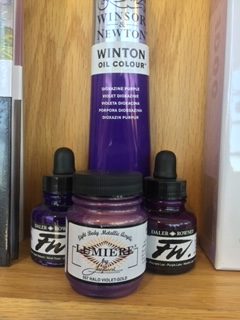
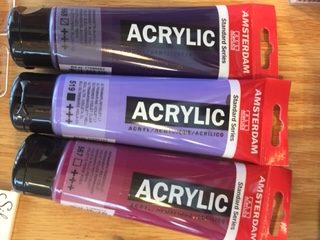



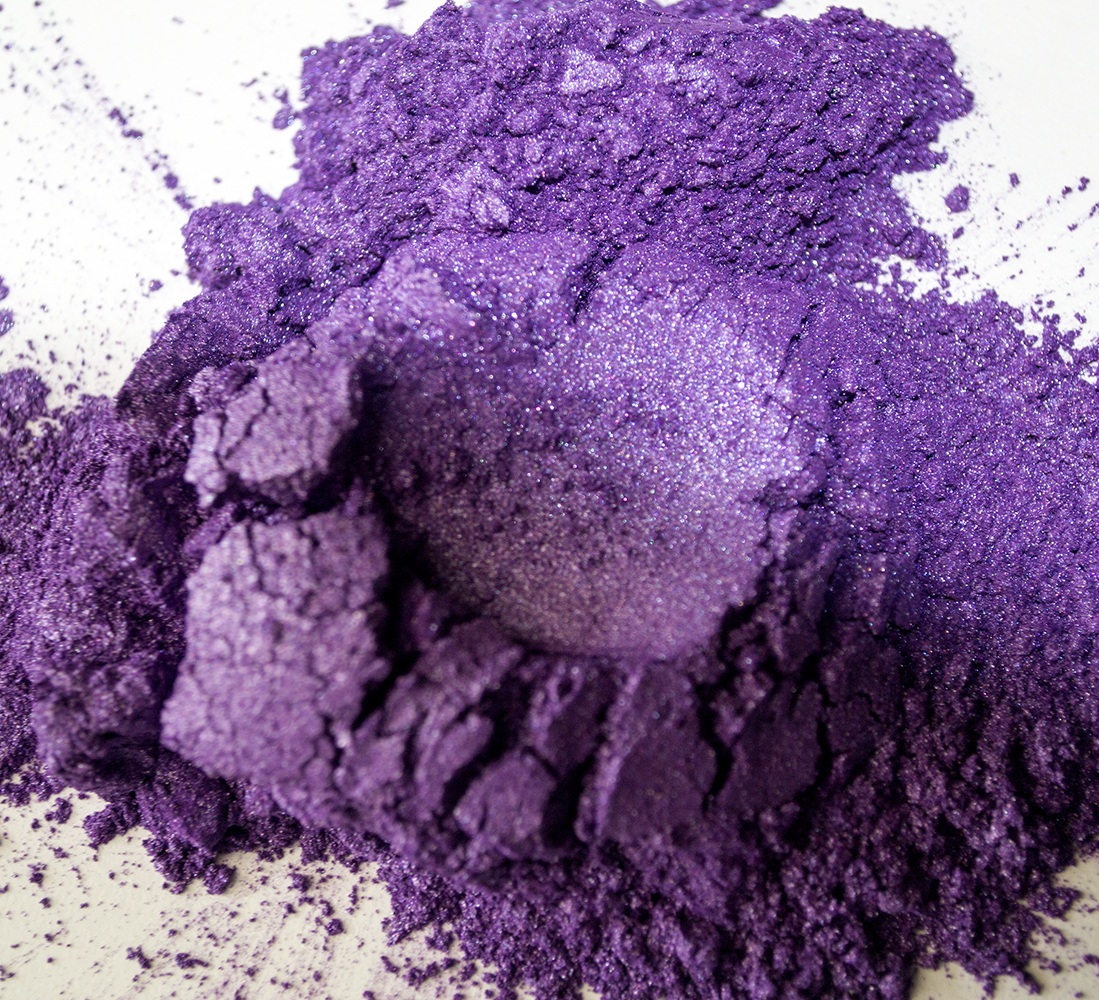

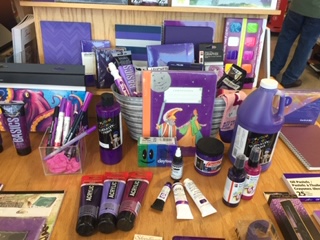

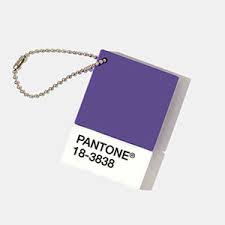

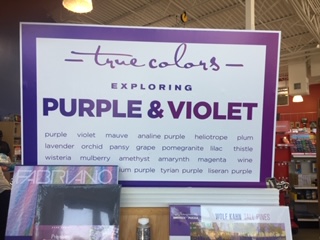




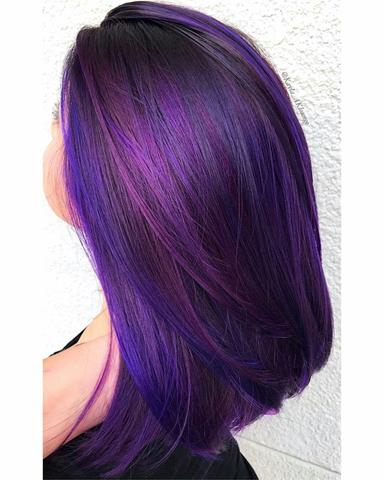
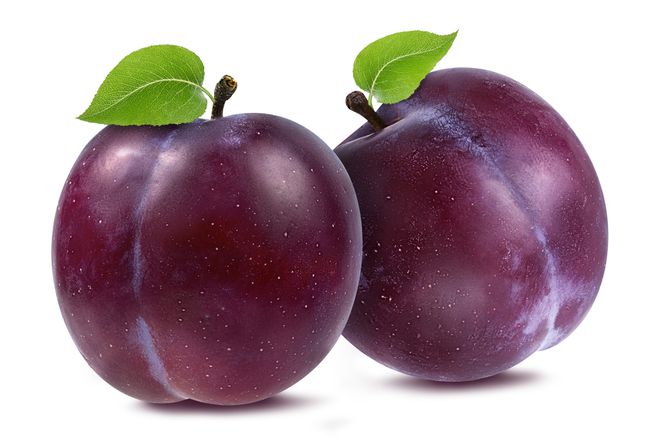

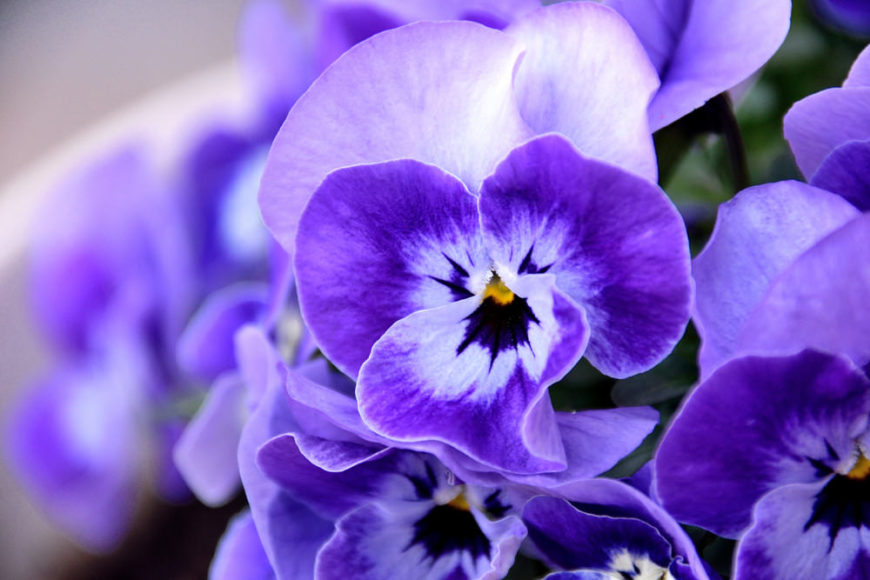
This June is all Purples & Violets and every hue in between.
Every UArt store has displays showcasing products, information and art supplies featuring this celebrated color range in different ways: pens, pencils, oils, acrylics, watercolor, pastels, journals, unique gifts and more.
Often associated with royalty, power and wealth for centuries, so purple’s regal history is well-documented. In fact, Queen Elizabeth I forbade anyone except close members of the royal family to wear it. The emperors of Rome wore purple togas, as did the Byzantine emperors. Purple’s elite status stems from the rarity and cost of the dye originally used to produce it. Purple fabric used to be so outrageously expensive that only rulers and the very wealthy could afford it. The dye initially used to make purple came from the Phoenician trading city of Tyre, which is now in modern-day Lebanon.
Purple fabric used to be so outrageously expensive that only rulers could afford it. The dye initially used to make purple came from the Phoenician trading city of Tyre, which is now in modern-day Lebanon. Fabric traders obtained the dye from a small mollusk that was only found in the Tyre region of the Mediterranean Sea.
A lot of work went into producing the dye, as more than 9,000 mollusks were needed to create just one gram of Tyrian purple. Since only wealthy rulers could afford to buy and wear the color, it became associated with the imperial classes of Rome, Egypt, and Persia. Purple also came to represent spirituality and holiness because the ancient emperors, kings, and queens that wore the color were often thought of as gods or descendants of the gods. Sometimes, however, the dye was too expensive even for royalty. Third-century Roman emperor Aurelian famously wouldn’t allow his wife to buy a shawl made from Tyrian purple silk because it literally cost its weight in gold. Talk about sticker shock.
Purple’s exclusivity carried over to the Elizabethan era (1558 to 1603), during which time everyone in England had to abide by Sumptuary Laws, which strictly regulated what colors, fabrics, and clothes could and couldn’t be worn by different classes within English society. Queen Elizabeth I’s Sumptuary Laws forbid anyone but close relatives of the royal family to wear purple, so the color not only reflected the wearer’s wealth but also their regal status.
The hue became more accessible to lower classes about a century and a half ago. In 1856, 18-year-old English chemist William Henry Perkin accidently created a synthetic purple compound while attempting to synthesize quinine, an anti-malaria drug . He noticed that the compound could be used to dye fabrics, so he patented the dye and manufactured it under the name aniline purple and Tyrian purple, making a fortune in the process.
The color’s name was later changed to “mauve” in 1859, based on the French name for the purple mallow flower, with chemists calling the dye compound mauveine. And that’s how the elite royal color became widely available and affordable thanks to a young scientist’s serendipitous experiment.
As for violet – it’s a bit of a different story. Violet hues tend to be brighter and move toward red/pink, and so violet’s it’s personality tends to evoke cheer and sensuality. The color’s name is derived from the violet flower. Amethyst is a notable violet crystal, its color arising from iron and other trace elements in quartz. Violet is the color at the end of the visible spectrum of light between blue and the invisible ultraviolet. …
Ever wonder if Elizabeth Taylor really had violet eyes? Well, she’s remembered for many things: her passionate performances in films, fondness for expensive jewelry, multiple marriages and, of course, those famous violet eyes. Thanks to colored contact lenses, anyone can have violet-colored eyes these days. But Ms. Taylor didn’t come by her “purple peepers” that way – the first tinted contact lenses weren’t commercially available until 1983. Taylor’s eye color was the real deal!
Purple & Violet Factoids
Carrots used to be purple, now most are orange!
There are many theories as to how and why most carrots are now orange. As far as we can tell, the Dutch have something to do with it. As the story goes 17th century Dutch farmers started to cross-breed specifically for orange carrots in honor of their ruler, William of Orange.
Porphyrophobia is fear of the color purple.
Say what? We can’t imagine someone being fearful of the color purple, however, fearing purple is a real thing! As explained on phobiasource.com, “the fear of virtually any color is linked to negative associations. The fear can develop as a result of observation or personal experience, but it often goes back to either a conscious or subconscious, but highly negative association between the color purple and something that left a lasting negative impression.”
Purple Day is celebrated on March 26.
Purple Day was founded in 2008, by Cassidy Megan of Nova Scotia, Canada. Purple Day is celebrated on March 26 and was created to raise awareness for epilepsy. “I wanted people around the world to come together and teach others about epilepsy.”
There ARE words that rhyme with ‘purple’
curple (Merriam-Webster)
hirple (Merriam-Webster)
turple (Urban Dictionary)
nurple (Urban Dictionary
There is only one nation with purple in its flag; Dominica.
Most flags have colors like red, blue, white, black or green. There is however one nation whose flag has purple in it and that’s Dominica. Their flag displays a parrot with purple chest and head.
Violet, or purple, eyes are extremely rare.
You might have seen celebrities with violet, or purple eyes. Most of those people are wearing purple contact lenses – to be noticed and look different and to be remembered. Violet eyes are very rare; only (some) people with Albinism or Alexandria’s Genesis may have that color eyes.
Color of the Year
The Pantone Color of the Year for 2018 was Ultra Violet. The Pantone Color Institute says it “communicates originality, ingenuity, and visionary thinking that points us toward the future.” However true this may or may not be, the violet range of colors has a long and interesting history-one that may give us other reasons to worship the color.
The insanity of violet
In 1874 when a band of outcast artists known as the Impressionists began their crusade against the norm, one commonly voiced criticism was their preoccupation with the color violet. Many concluded that the artists were, to a man, completely mad, or at the very least suffering from a hitherto unknown disease, which they dubbed ‘violettomania’.” The Impressionists believed that because the complementary color to sunlight yellow was violet, it made sense that the shade and shadows in their paintings should be made up of violets.
Red and blue do not make violet
In kindergarten, we learned to mix colors. To make violet, we took the red and blue paint and mixed them in degrees to get the purple/violet we wanted. However, as described in The Secret Language of Color, by Joann and Arielle Eckstut, “Violet is a spectral color unto itself-a wavelength in the form of visible light and the shortest wavelength visible to humans.” Violet is on the opposite end from red, which is the color with the longest wavelength. Ergo, red and blue do not make violet!
In Japan, the color purple signifies wealth and position
Purple is the hardest color for the eye to distinguish
Purple symbolizes the gay community in many Western cultures
The Archbishop of Cyprus is allowed to sign official papers in purple ink.
The film Purple Rain, released in 1984, won an Oscar for the Best Original Song Score
A film called The Color Purple, which was released in 1985, received 11 Oscar nominations, however it didn’t win a single award.
Purple is the color for epilepsy awareness because of it’s association with lavender, which is a traditional herbal treatment for the disease.
Forbidden City in Beijing, China is actually called “The Purple Forbidden City”, which is a reference to a secret purple area in heaven, thought to be centered somewhere near the North Star.
If you’re born “in the purple” you are born of high or a noble birth.
Samuel L. Jackson said that he would only play Mace Windu in Star Wars if he had a purple lightsaber!
